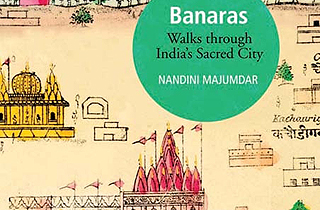Aspiring to be scholarly but not intimidating, this book takes you through the ghats and bylanes of Banaras (Varanasi), managing to be more than just a tourist guide. It is clearly aimed at the large number of foreign tourists who throng what may be, arguably, India’s most exotic old city. But there is no hotel- or travel-information here. This are detailed acÂcounts of 11 walks that you can take in heritage Banaras, with a 12th thrown in for Sarnath, and it does a good job of its brief.
Even for an armchair inquirer into Banaras, this book can be an affectionate introduction and an informative companion. Between them, the walks cover much of what makes Banaras ‘Banaras’. In addition to the expected — but no less interesting — descriptions of temples and architecture, there are engaging detours into subjects like: the ways of doing business in the silk market of Kunj Gali, the legendary Kachauri-Jalebi breakfasts near Vishwanath Gali, or the Shia Muslims of Dalmandi. Homage is paid to the unique flavours of neighbourÂhoods such as Madanpura and its weavers; SonarÂpura and its sweet shops; Thatheri bazaar and its metalworkers. There are boxes on themes as diverse as the famous music festivals of Banaras, the Ramlila, the Banarasi Paan, the Aghori sect…and a satisfying amount of local-food tips. And, of course, the 11th walk, which is a rich and lush amble along the 84 ghats by the Ganga is a must-do.
The book is permeated by the author’s appreciation of the syncretic Hindu-Muslim culture of Banaras as manifested in the arts or in everyday business. It is also consciously historical in its approach, taking pains, for example, to delineate how Hindu gods and legends have evolved over time.
Given that, it is surprising that the introÂduction says that Tulsidas wrote his version of the Ramayana in the 13th century (though another chapter asserts, correctly, that he did so in the 16th century). And that the multi-talented James Prinsep, with his seminal conÂtributions to Banaras and to the study of Indian history, is described as “an East India Company cartographer”. One more gripe: for an imÂmensely photogenic city like Banaras, I’m afraid the images are practical but disappointing.




